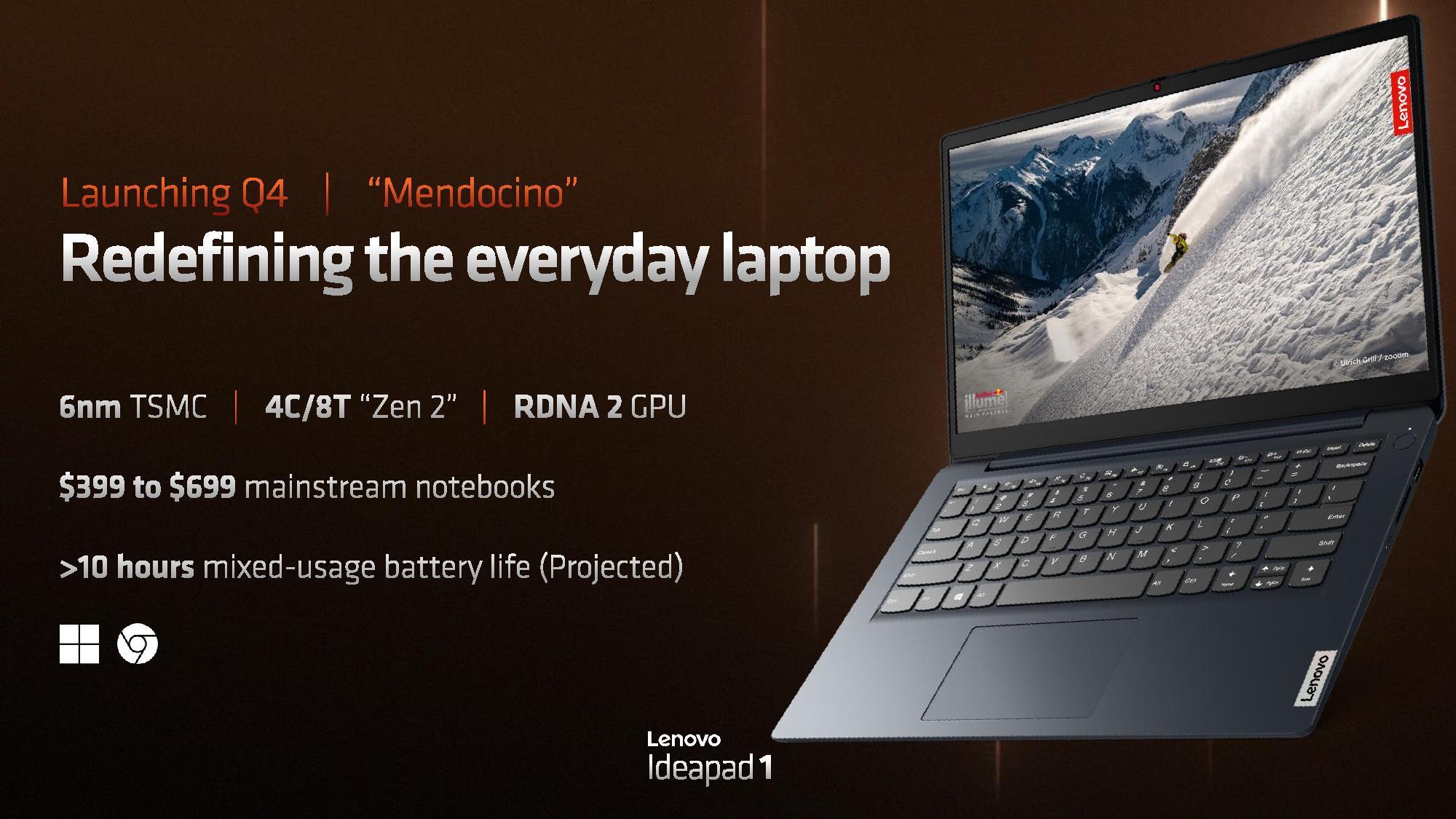AMD Reveals Mendocino Zen 2 APUs With RDNA 2 Graphics
AMD has announced Mendocino today, a new breed of mobile APUs that aims to redefine the everyday laptop. While Ryzen 6000 (Rembrandt) targets premium notebooks, Mendocino caters to mainstream laptops that compete in the $399 to $699 price range.
Rembrandt brings AMD's Zen 3+ cores and RDNA 2 graphics into a single package. With Mendocino, however, the chipmaker opted to roll with the Zen 2 microarchitecture instead but retained the RDNA 2 solution. It's the exact blueprint that AMD used for Van Gogh, from which Aerith (the custom APU in the Steam Deck) is derived. Therefore, Mendocino is essentially an offshoot of Van Gogh but on a more recent process node. Mendocino also has access to LPDDR5 memory although AMD didn't disclose the nature of the memory bus.
Van Gogh is on TSMC's 7nm process node. Rembrandt and Mendocino take advantage of TSMC's 6nm manufacturing process. The 6nm "N6" process node delivers up to 18% higher logic density with an identical power and performance level in comparison to the 7nm "7N" process node that was previously used for Ryzen 5000 (Cezanne) lineup.
While we've seen Rembrandt maxing out at eight cores and 16 threads, Mendocino will only reach half of that number. The highest Mendocino part will offer four Zen 2 cores with eight threads. AMD didn't share the specifications for Mendocino. In terms of processing power, we could expect something along the lines of AMD's Ryzen 4000 (Renoir) chips that also wield Zen 2 cores. However, Renoir was on TSMC's 7nm process node; therefore, Mendocino should theoretically feature improved clock speeds as a product of the 6nm process node.
On the graphics side, Mendocino features the RDNA 2 graphics engine. Therefore, consumers will enjoy all the video encode and decode capabilities from RDNA 2 at a more accessible price point. Again, AMD didn't delve into details. The Radeon 680M, Rembrandt's highest-end iGPU, comes with 12 RDNA 2 compute units. Being a lower-tier APU, Mendocino will likely see a lower compute unit count, perhaps between six to eight compute units. It's plausible that we may get a Steam Deck-type level of performance in a laptop with Mendocino.
One of Mendocino's strong suits is its battery life. AMD estimated a minimum of 10 hours of battery life based on mixed usage. We've seen better with AMD's other mobile Ryzen chips. However, Mendocino will power laptops that cost between $399 and $699, and at that price range, most consumers expect a battery life between four to six hours, not over 10.
AMD has big plans for its Ryzen-powered notebook expansions across the different segments. The chipmaker has forecasted over 60 enterprises, 50 high-performance, and 90 ultra-thin designs for what is left of 2022. As for Mendocino, we can expect to see devices with the new 6nm mobile APUs in the fourth quarter of the year in both Windows and ChromeOS devices.
Get Tom's Hardware's best news and in-depth reviews, straight to your inbox.

Zhiye Liu is a news editor, memory reviewer, and SSD tester at Tom’s Hardware. Although he loves everything that’s hardware, he has a soft spot for CPUs, GPUs, and RAM.
